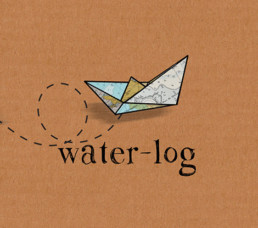A frigate bird wheels overhead as the hazy dawn light is mirrored back by the water. The sea is absolutely still, more like a lake than an ocean, blurring the horizon so that the sky bleeds into the water. Slowly, gently, a large, old leatherback turtle wakes up from his slumber on the surface of the sea and coaxes his limbs out of their long sleep. His stirs sluggishly, sighing heavily as his legs wave about in the swell. “Morning”, I say to him cheerfully, and wave back as the sound of our engine and closeness of our boat startle him into more purposeful movements.
Ahhh, the joys of being on the road again. Well, the watery road at any rate.
Yes, the rumours are true, we have in fact resumed the sailing portion of this sailing round the world malarkey and finally cast off from Panama. 8 months in the country defined by the inter-oceanic canal were enough for us. In fact, we were so keen to make some big moves again that we skipped the entire Pacific Panamanian coast altogether. This means that we missed such gems as the Las Perlas islands, Cebaco and Coiba. But, you simply cannot see and stop everywhere so, other than our brief sojourn in lovely Taboga, we were excited to push off from Panama City and speed happily onto Golfito in Costa Rica; our first passage of any significant mileage since the Providencia to Bocas del Toro run, this one was a 350 miler.
Now, for those of you who aren’t aware, the passage north to Mexico up the Pacific coast of Central America can be a bit of a gamble as far as wind is concerned. Generally, the current is meant to be in your favour up to the Gulf of Fonseca, which is where Nicaragua, Honduras and El Salvador meet. But the wind can be a fickle mistress plus there are certain zones where the ‘gap winds’ can give you a pounding – more on those in future posts. We decided to take a route that goes quite close to the shoreline as you can take advantage of any little bit of land or sea breeze here, plus certain wind acceleration zones around capes and headlands can give you a push if the base level wind isn’t giving you much. Our first passage would take us on almost every point of sail as we made a big U south-west, then west, then north-west in order to get around the ‘lump’ of Panama, where Punta Mala is. The next run was up the majority of the Costa Rican coast, from Puerto Jimenez to Bahia Samara, around 265 miles.
But, this is all simply just setting the scene, as what I really want to talk about is the wildlife.
The cons of an unpredictable wind are that you may well be becalmed, have to use your engine, or drift along so slowly that you make very little progress. The definite pro of moving anywhere so slowly is that you are greeted by such a vast array of animals to marvel at that you really don’t mind. Leatherback turtles have been in abundance on these last two trips, nodding their little old dinosaur heads at us and waving a friendly flipper. We’ve also has the pleasure of a whole sea full of jumping eagle rays, spotted rays and manta rays, slapping their bellies on the surface of the water and leaping to such great heights that they seem to be auditioning for the circus. Then there have been the sharks, the solo black or grey fins, moving stealthily through the water and the smaller fish jumping ahead of them trying desperately not to be dinner. We’ve also seen several jumping marlins, with their long sword-like bills piercing the waves, and the odd sailfish. James spotted a whale on the run from Panama City and we also caught an 8 kilo, 4 foot mahi-mahi, our biggest catch to date, on the passage up the Costa Rican coast which fed us for nearly a week!
However, the stars of the show have really been the dolphins. Now, you’d be right in thinking that we’ve come across quite a lot of dolphins in our travels so far. But neither of us had ever seen anything quite like the superpod that we encountered while passing the Bahia de Coronado on our last passage. Again we had no wind so we were motoring along in a rippleless sea when I saw the first fins. To begin with we thought they were feeding as there was a clear circle of them within which they leapt and somersaulted to their hearts’ content. Yet, as we got closer, not only was it clear that they were just playing and practising their acrobatic skills but we began to realise just how many of them there were – easily over a hundred in one great big pod. We saw huge ones and tiny babies all flinging themselves merrily sideways, flipping out of the water, jumping, twisting and spinning. With no other boats or humans in sight and a 360 degree flat horizon you cannot help but feel incredibly humbled and privileged to play audience to such a sight of nature at its very best and most joyful.
And it’s moments like that which definitely take the sting out of burning a bit of diesel to get where you’re going.
